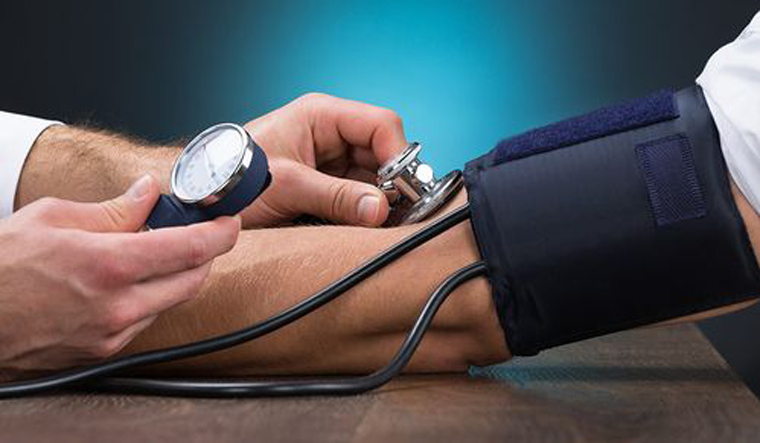Scientists have developed a flexible wireless sensing system that can be comfortably worn in the mouth by people with high blood pressure to easily monitor their salt intake in real time.
For people who have hypertension and certain other conditions, eating too much salt raises blood pressure and increases the likelihood of heart complications.
Based on an ultrathin, breathable elastomeric membrane, the sensor integrates with a miniaturised flexible electronic system that uses Bluetooth technology to wirelessly report the sodium consumption to a smartphone or tablet.
The researchers plan to further miniaturise the system - which now resembles a dental retainer - to the size of a tooth.
"We can unobtrusively and wirelessly measure the amount of sodium that people are taking in over time," said Woon-Hong Yeo, an assistant professor at the Georgia Institute of Technology in the US.
"By monitoring sodium in real-time, the device could one day help people who need to restrict sodium intake learn to change their eating habits and diet," said Yeo.
The device, described in the journal Proceedings of the National Academy of Sciences, has been tested in three adult study participants who wore the sensor system for up to a week while eating both solid and liquid foods including vegetable juice, chicken soup and potato chips.
Key to development of the intraoral sensor was replacement of traditional plastic and metal-based electronics with biocompatible and ultrathin components connected using mesh circuitry.
Sodium sensors are available commercially, but researchers developed a flexible micro-membrane version to be integrated with the miniaturised hybrid circuitry.
"The entire sensing and electronics package was conformally integrated onto a soft material that users can tolerate," Yeo said.
"The sensor is comfortable to wear, and data from it can be transmitted to a smartphone or tablet. Eventually the information could go a doctor or other medical professional for remote monitoring," he said.
The flexible design began with computer modelling to optimise the mechanical properties of the device for use in the curved and soft oral cavity.
The researchers then used their model to design the actual nanomembrane circuitry and choose components.
The device can monitor sodium intake in real-time, and record daily amounts. Using an app, the system could advise users planning meals how much of their daily salt allocation they had already consumed. The device can communicate with a smartphone up to ten metres away.
Next steps for the sodium sensor are to further miniaturise the device, and test it with users who have the medical conditions to address: hypertension, obesity or diabetes.
The researchers would like to do away with the small battery, which must be recharged daily to keep the sensor in operation. One option would be to power the device inductively, which would replace the battery and complex circuit with a coil that could obtain power from a transmitter outside the mouth.

